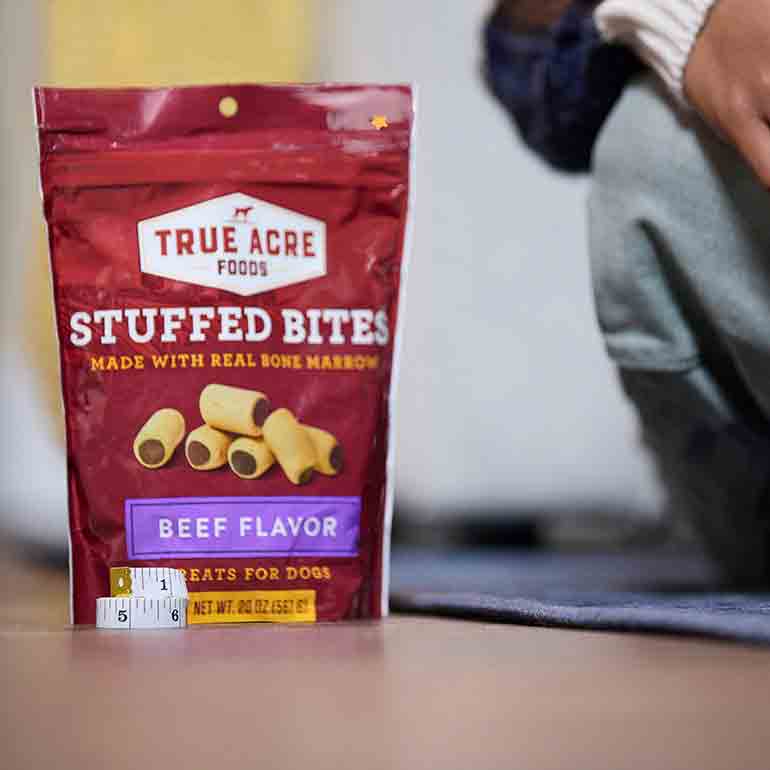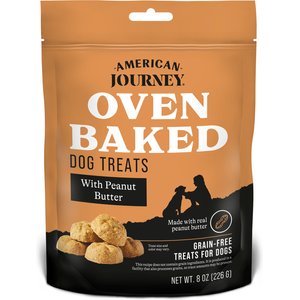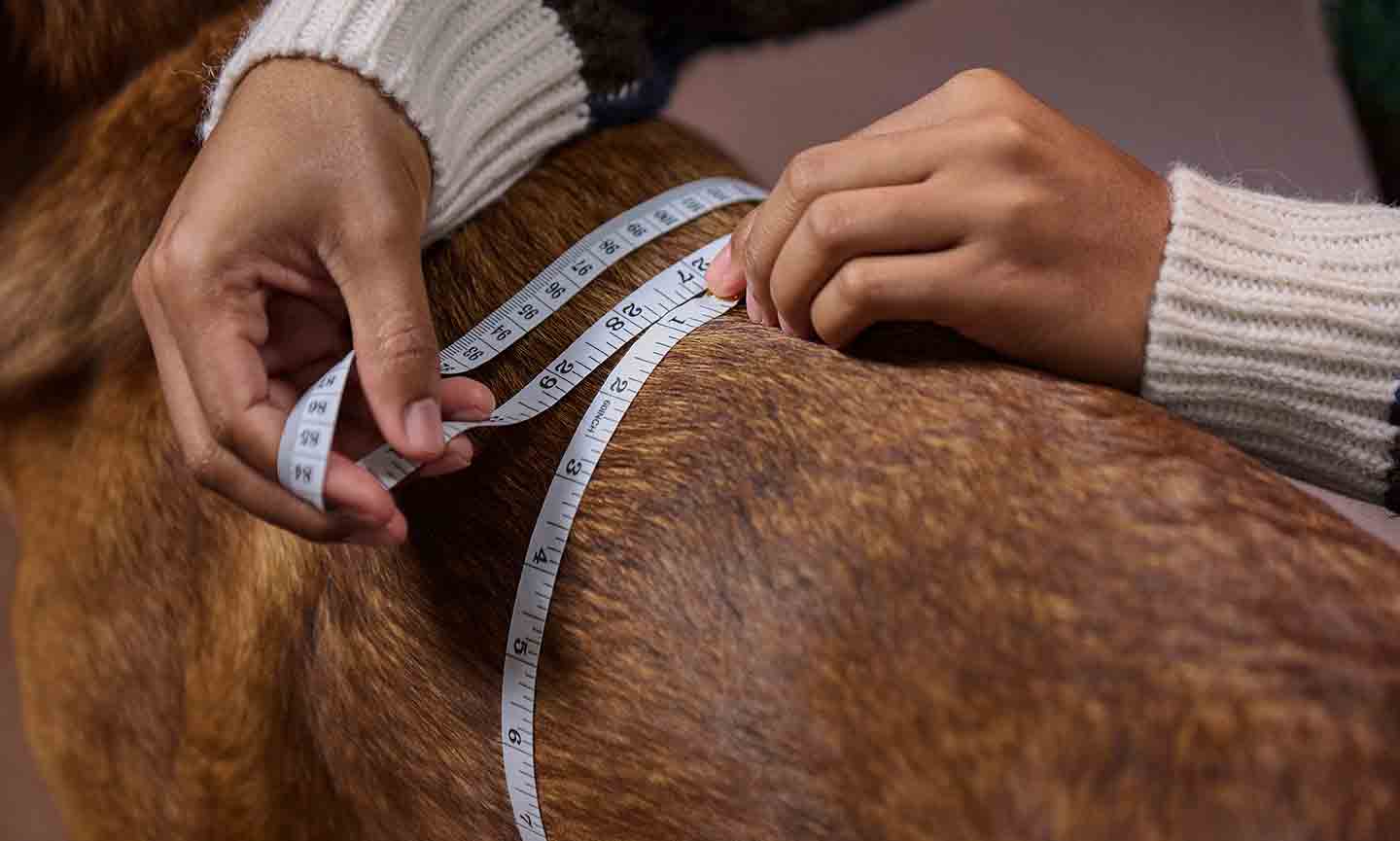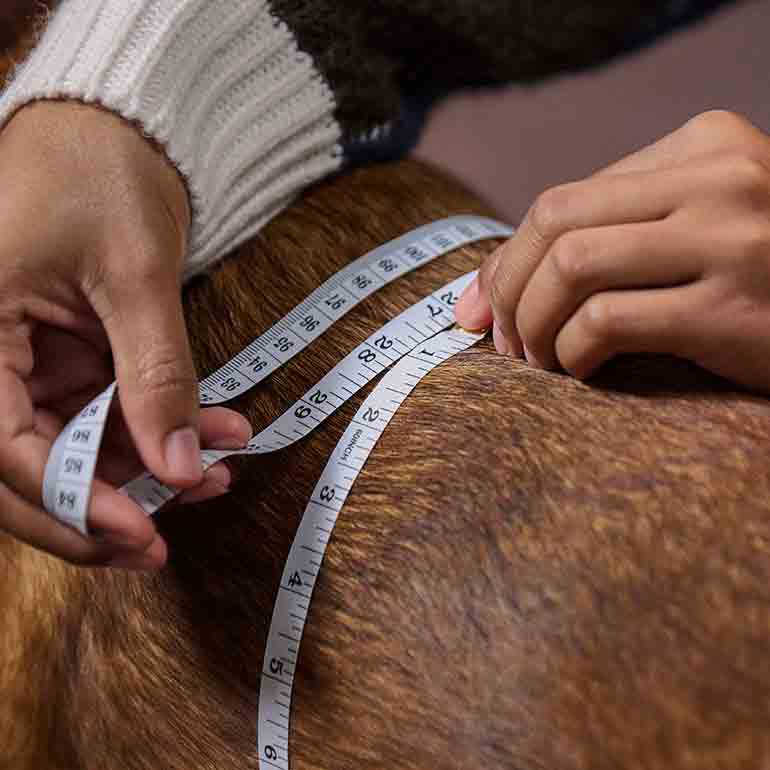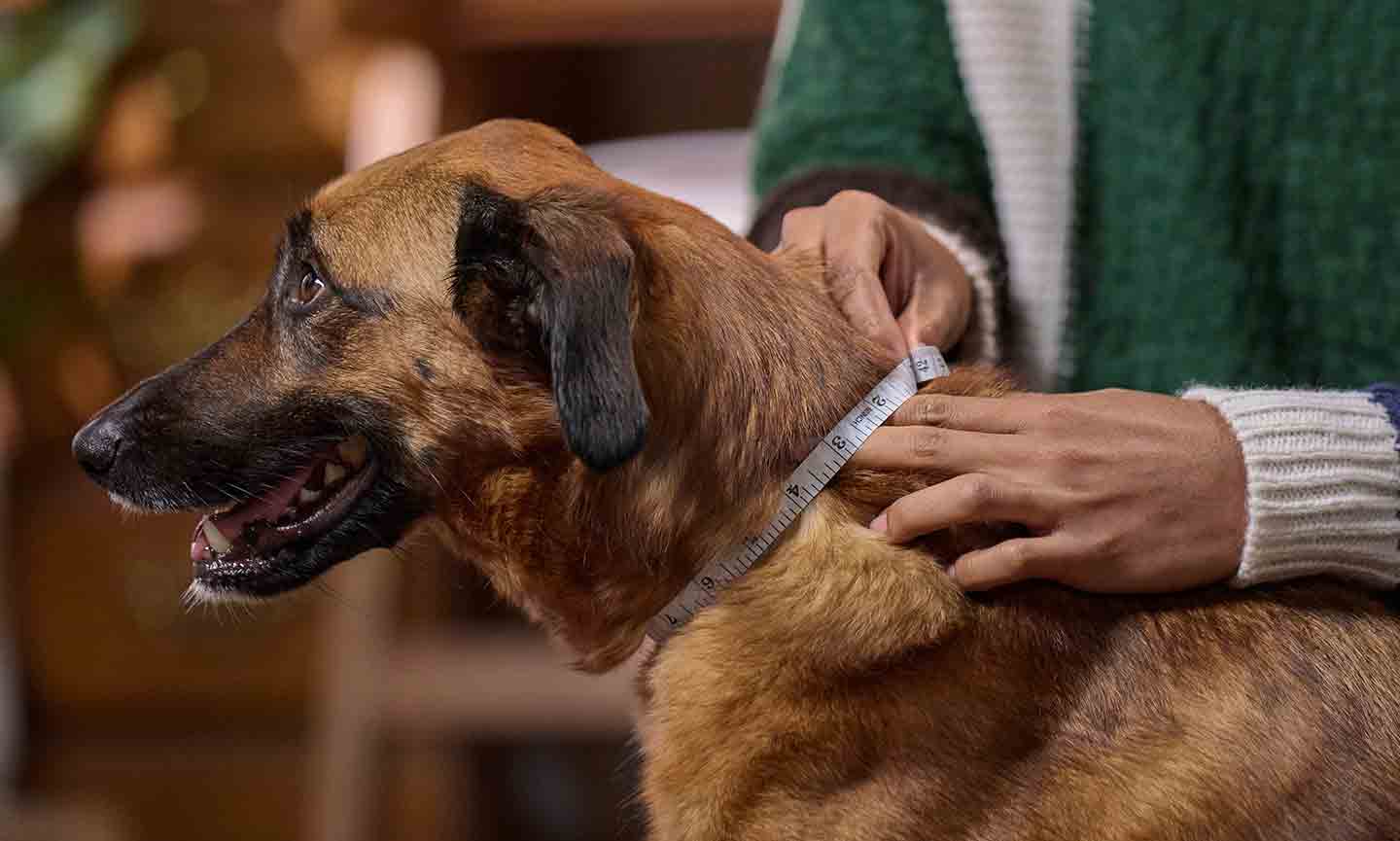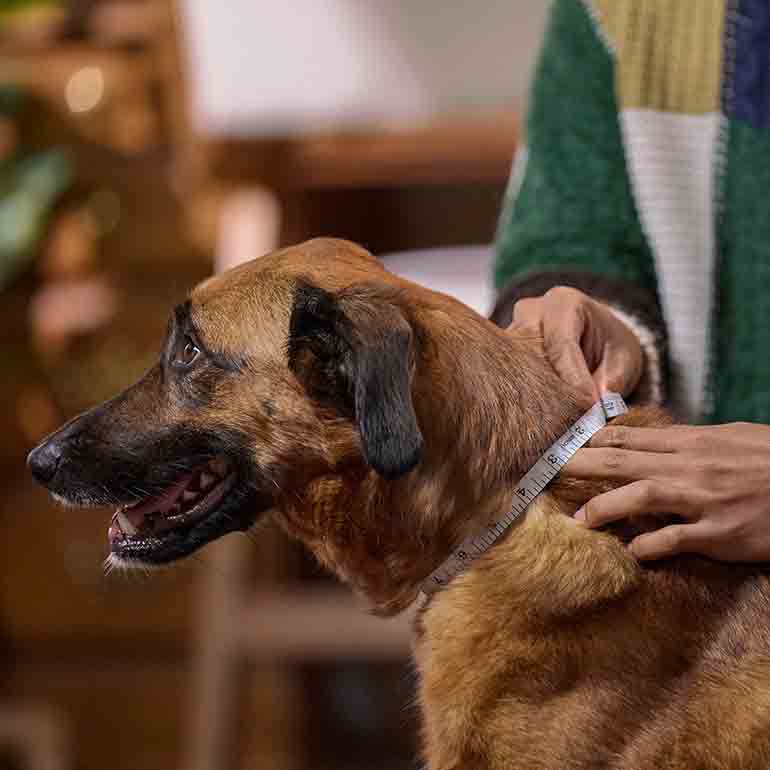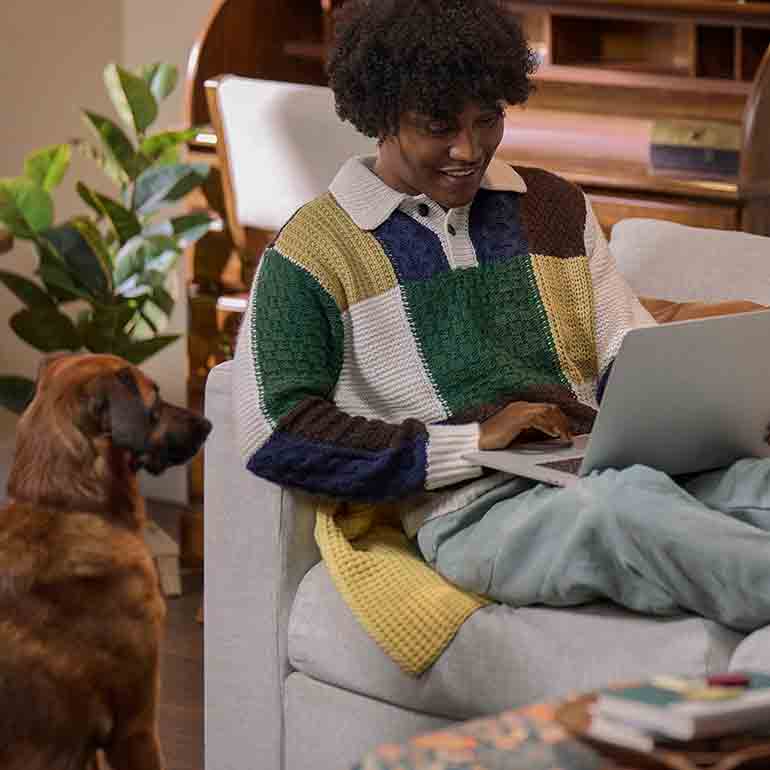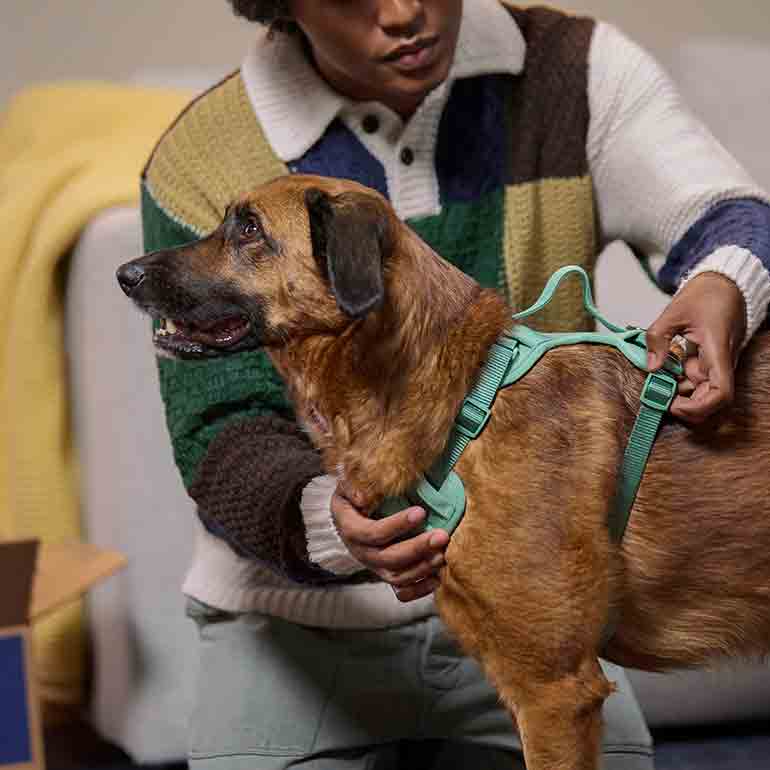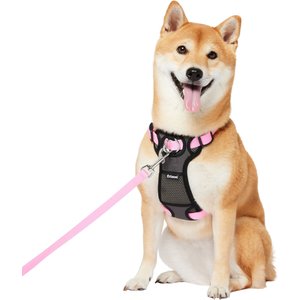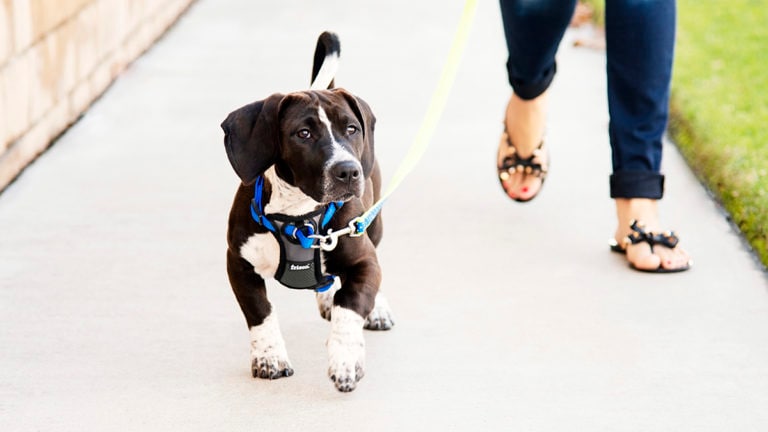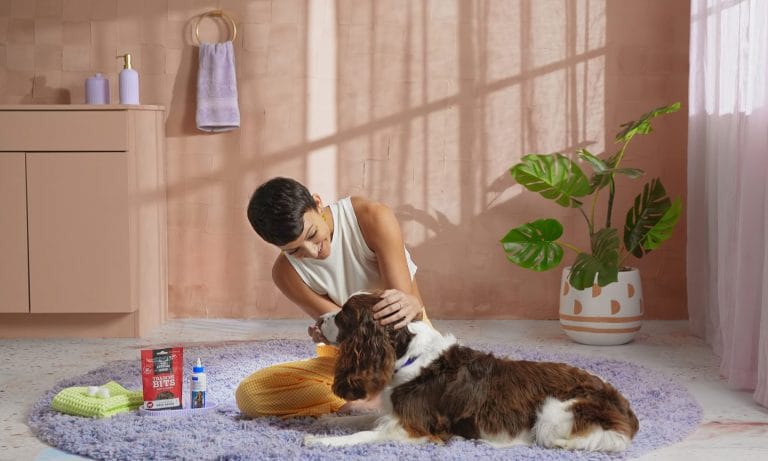A dog harness is one of the most important purchases you can make for your pup. In everyday scenarios, it serves as a safety tool that helps you provide better control in a variety of situations. It also promotes comfort and reduces strain around their neck (while minimizing injuries) by evenly distributing the force of leash pressure. A dog harness is also handy when training your pooch and is an invaluable tool in improving leash manners and reducing pulling, jumping or lunging.
But here’s the thing: All of that is only true if your dog’s harness fits properly. So, how do you measure your dog for a harness?
Ahead, we’re helping you determine the best harness size for your dog and offering some pro tips on different types of dog harnesses and what to consider for your own pup. So, break out the measuring tape and let’s dive in.
How To Measure for a Dog Harness: Step by Step
In order to figure out the correct dog harness size, you’ll need to do a few measurements and then compare these numbers to a size chart.
“Dog harness products are designed around the comfort and safety of your pet, so measuring is going to help ensure that the product fits properly,” notes Jack Vandever, Chewy’s senior manager of technical design for soft goods. From there, you can consider other details that are important to you and your pooch.
1Gather Your Supplies
Round up the following items to take the appropriate measurements of your dog.
- Soft tape measure
- A helping hand (if your pup isn’t super cooperative)
- Dog treats (your furry friend will appreciate positive reinforcement for their patience during this measuring exercise)
2 Measure Your Pup’s Chest Girth
The chest girth—sometimes listed as just “chest” on sizing charts—is the circumference around the widest part of your dog’s chest (rib cage). This is the most important measurement you’ll take.
To find it, wrap your measuring tape around your dog’s chest, ensuring that it’s running along the widest part, and note the measurement. The tape measure should be taut but not pressing deeply into your pup’s skin. You should be able to slide two fingers between the measuring tape and your dog’s body.
3Measure Your Dog’s Neck Circumference
4Compare Their Measurements to the Product Size Chart
5Purchase and Do a Fit Check
Make your selection and purchase the best dog harness for your pup. Once it arrives, put it on your dog to ensure that you’ve found the perfect fit. It should be snug but not too tight, and it shouldn’t be so loose that it causes chafing or allows them to wiggle free.
What Else Should I Look for in a Dog Harness?
When selecting the right harness for your pooch, you may want to consider these factors and details as well.
Harness Style
There are a few different harness styles to choose from, each with its own advantages.
- Standard Harness (Over the Head): This is a basic, everyday harness designed to provide control and prevent choking when your dog pulls on the leash. It typically has straps that go around your dog’s neck and chest and features a D-ring for leash attachment on the back. It’s usually easy to adjust.
- Step-in Harness: As the name implies, your dog steps into this harness style and then you clip it closed around their back. It’s easy to put on and take off, making it a great option for squirmy pups or dogs new to harnesses. However, note that it may not have as much adjustability compared to other types.
- No-Pull Harness: Also known as front-clip or anti-pull harnesses, this style is designed to help curb pulling behavior. It comes in handy with heavy or strong dogs or pups who tend to lunge or run.
- Vest Harness: This type of dog harness covers more of your dog’s body, providing added support and stability. It’s a good option for small or toy breeds or dogs with certain health conditions who need more support.
Comfort and Safety
All harnesses come with different features that may benefit you or your pup. Here are some additional details dog parents may want to consider before purchasing a dog harness:
- Webbing: This is also referred to as the harness strap width. A smaller webbing may make more sense for smaller dogs, while a thicker webbing is good for larger dogs, dogs with long hair or dogs who tend to pull.
- Padding: A little extra padding can make a dog harness feel more comfortable for any pup. However, it can be an especially nice feature for dogs who pull or who have short fur, as it can help minimize chafing.
- Reflective Material: If you tend to walk your pup at night or go camping often, reflective details offer an additional level of safety. For example, the Chai's Choice Premium Outdoor Adventure 3M Polyester Reflective Front Clip Dog Harness has reflective sections that illuminate under light.
- Short Handle: Some dog harnesses have a built-in handle, allowing you to pick up your dog if necessary. This can be handy if they tire on long walks or need to be carried on public transit or for other reasons. A handle can also give pet parents another line of defense if their dog lunges or darts.
- Long Strap: Similarly, there are dog harnesses with a long strap that dog parents can put over their shoulder as they walk their dog, like NeoAlly Full Body Lift Support Sling & Mobility Aid Dog Harness. This feature is helpful for injured dogs or dogs with certain health conditions who can benefit from reducing their weight load while they walk.
The Best Dog Gear
Share:


